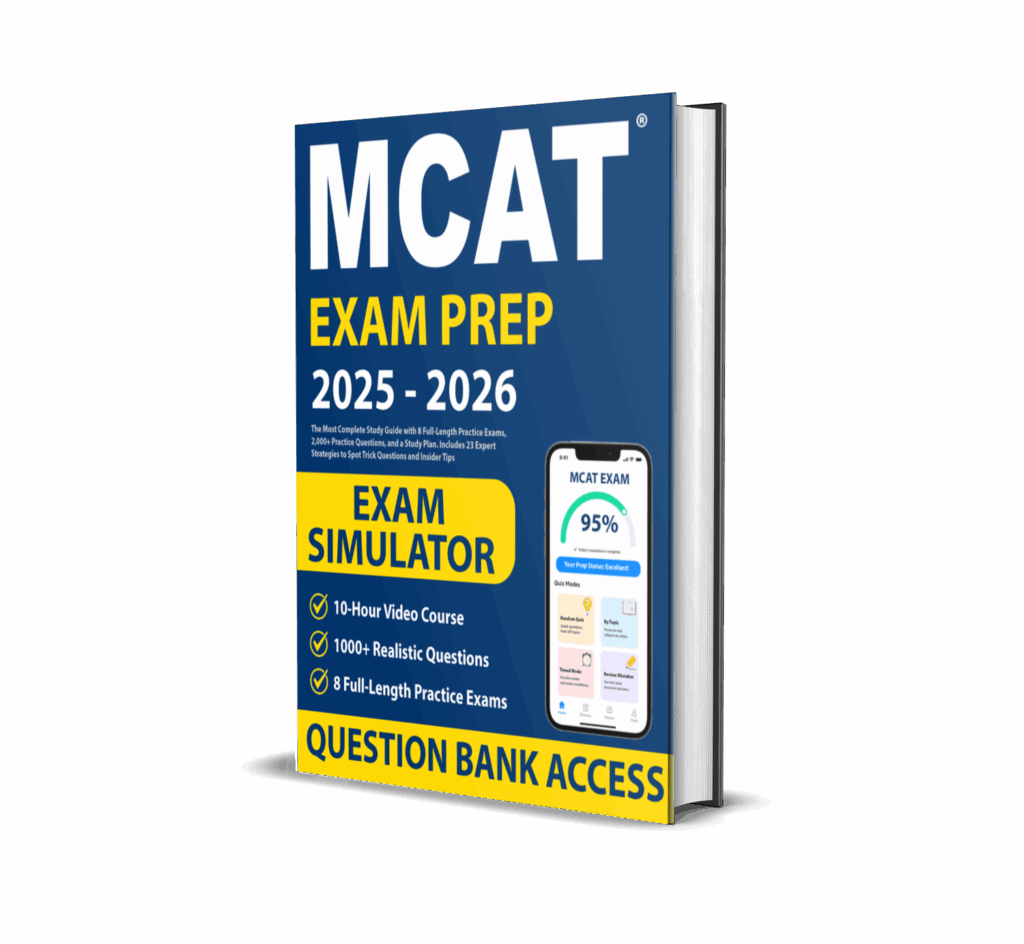
ARE YOU READY?
LET’S PRACTICE!
#1. Which of the following hormones is derived from cholesterol?
#2. Which structure is responsible for establishing the blood-testis barrier?
#3. Which phase of the cardiac cycle corresponds to ventricular contraction?
#4. What is the Gibbs free energy change at equilibrium?
#5. Which of the following DNA sequences would have the highest melting temperature?
#6. What is the effect of increased 2,3-BPG on hemoglobin’s affinity for oxygen?
#7. Which ion is involved in initiating exocytosis of neurotransmitters?
#8. What is the function of the enzyme aldolase in glycolysis?
#9. Which immunoglobulin is primarily found in secretions such as saliva and tears?
#10. What is the approximate pKa of the carboxyl group in amino acids?
#11. Which of the following methods best separates proteins based on size?
#12. What is the neurotransmitter released by sympathetic postganglionic neurons?
#13. What is the result of increased sympathetic activity on the pupil?
#14. Which layer of the skin contains blood vessels?
#15. Which vitamin is a cofactor for carboxylation reactions?
#16. Which of the following is a non-reducing disaccharide?
#17. Which part of the nephron is responsible for active transport of sodium without water reabsorption?
#18. Which protein complex is responsible for the degradation of ubiquitinated proteins?
#19. Which class of enzymes catalyzes redox reactions?
#20. Which neurotransmitter is depleted in Parkinson’s disease?
#21. Which of the following is a major product of the pentose phosphate pathway?
#22. Which part of the brain regulates thirst and hunger?
#23. Which of the following cells are primarily responsible for myelination in the CNS?
#24. Which genetic event is most likely to cause trisomy?
#25. Which organ is derived from the endoderm?
#26. Which property of water explains why it rises in a narrow tube?
#27. Which of the following techniques is best for quantifying mRNA levels?
#28. Which term describes the ability of a test to correctly identify those without a disease?
#29. What is the function of acetylcholinesterase?
#30. Which of the following properties allows carbon to form diverse molecules?
#31. What is the approximate internal pH of lysosomes?
#32. What is the function of troponin in muscle contraction?
#33. Which structure forms the blood-brain barrier?
#34. What does a high Km indicate about an enzyme’s affinity for its substrate?
#35. Which of the following best defines an agonist?
#36. Which type of lipid is most abundant in the plasma membrane?
#37. Which macromolecule contains both peptide and disulfide bonds?
#38. Which of the following is an effect of cortisol?
#39. Which of the following mutations is least likely to alter protein function?
#40. Which process involves RNA-dependent RNA polymerase?
#41. Which of the following is directly involved in DNA proofreading?
#42. Which part of the adrenal gland secretes catecholamines?
#43. Which test measures the amount of reducing sugar in a solution?
#44. What’s the purpose of SDS in SDS-PAGE?
#45. What does the term ‘vector’ refer to in molecular biology?
#46. Which brain structure controls balance and coordination?
#47. What is the role of oxytocin in childbirth?
#48. Which enzyme is involved in the first step of glycolysis?
#49. Which psychological theory emphasizes observable behavior over internal thoughts?
#50. Which neurotransmitter is associated with feelings of well-being and is often linked to depression?


